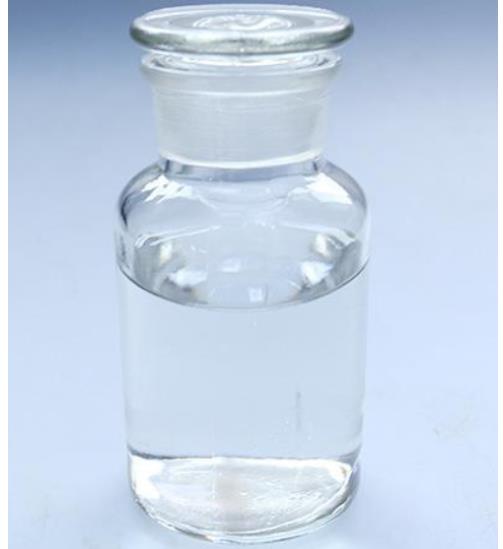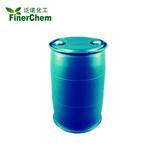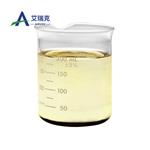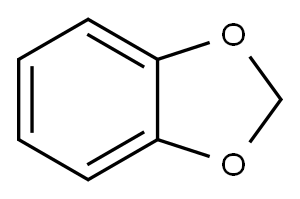Understanding 1,3-Benzodioxole
May 21,2024
Introduction to 1,3-Benzodioxole
1,3-Benzodioxole, commonly known by its trivial name benzodioxole, is a heterocyclic organic compound that has gained increasing significance in various chemical applications due to its unique structural and chemical properties. This compound, consisting of a benzene ring fused with a dioxole ring, displays exceptional versatility in synthetic chemistry, serving as a crucial intermediate in the manufacture of complex molecules. Its presence in the chemical industry is notable in the synthesis of pharmaceuticals, agrochemicals, and aromatic compounds. Moreover, the study of 1,3-Benzodioxole's interactions and reactivity continues to provide insights into the mechanisms of ring formation and substitution reactions, further underscoring its importance in advancing organic chemistry.

Figure 1 Characteristics of 1,3-Benzodioxole
Synthesis of 1,3-Benzodioxole
The synthesis of 1,3-Benzodioxole typically involves the condensation of catechol with methanol in the presence of a strong acid catalyst, such as hydrochloric acid or sulfuric acid. This reaction forms the dioxole ring by methylenedioxy bridge formation, where the methanol acts as the methylene source. The process requires careful control of reaction conditions, including temperature and pH, to ensure high yield and purity of the product.
Main Components
1,3-Benzodioxole, often referred to as benzodioxole, is a chemical structure where a benzene ring is fused with a dioxole ring, forming a heterocyclic compound. The molecular formula of this compound is C7H6O2, and it is characterized by a high degree of aromaticity, which significantly enhances its stability and contributes to its reactive nature. The dioxole ring, integral to its structure, contains two oxygen atoms which are key to the compound’s unique chemical properties. These oxygen atoms are positioned adjacent to each other within the five-membered dioxole ring, making the ring more electron-rich and reactive.
This compound is often involved in various chemical syntheses, especially in the pharmaceutical industry where it serves as a precursor or an intermediate in the production of more complex molecules. The presence of oxygen atoms in the ring increases the electron density, which can facilitate substitution reactions, making 1,3-benzodioxole an important component in organic synthesis. Additionally, its simple yet versatile structure allows for a variety of derivatives to be formed, expanding its utility in different chemical applications. The understanding of such compounds is crucial in fields like medicinal chemistry, where modifications of such basic structures lead to new therapeutic agents.
Uses of 1,3-Benzodioxole
1,3-Benzodioxole is widely utilized in both the industrial and pharmaceutical sectors. It acts as a precursor or an intermediate in the creation of more complex chemical compounds, playing a crucial role in the synthesis of various pharmaceutical agents. In medicinal chemistry, derivatives of 1,3-Benzodioxole are investigated for their potential therapeutic properties, including anti-inflammatory and neuroprotective effects. Additionally, these derivatives find significant use in the fragrance industry, where they are incorporated into perfumes and other scented products due to their unique and appealing aromatic qualities. This broad range of applications highlights the versatility and importance of 1,3-Benzodioxole in different scientific and commercial fields.
Storage Methods
Proper storage of 1,3-Benzodioxole is crucial to maintain its quality and prevent degradation. The compound should be stored in a cool, dry place, away from direct sunlight and moisture. It is typically kept in airtight containers made of materials that do not react with organic solvents, such as glass or certain types of plastics. Additionally, ensuring that the storage area is well-ventilated and compliant with fire safety regulations is essential due to the compound's flammable nature.
Conclusion
1,3-Benzodioxole is a versatile and valuable chemical compound with a wide range of applications in the modern chemical industry. Its synthesis, while straightforward, requires precise control over various factors to ensure the production of a high-quality product. Understanding the proper storage methods and uses of 1,3-Benzodioxole can help professionals optimize its application in their specific fields, leading to innovative developments and efficient use of this compound.
References
[1]Tagashira M, Ohtake Y. A new antioxidative 1, 3-benzodioxole from Melissa officinalis[J]. Planta medica, 1998, 64(06): 555-558.
[2]Hodgson E, Philpot R M. Interaction of methylenedioxyphenyl (1, 3-benzodioxole) compounds with enzymes and their effects on mammals[J]. Drug metabolism reviews, 1975, 3(1): 231-301.
- Related articles
- Related Qustion
- Unveiling the multifaceted biological activities of 1,3-benzodioxole derivatives Sep 20, 2023
1,3-Benzodioxole derivatives show promising biological activities including anti-tumor, anti-hyperlipidemia, and antioxidative effects.
- What is 1,3-Benzodioxole? Feb 12, 2020
It has recently been reported that 1,3-benzodioxole derivatives possess cytotoxic activity against several human tumor cell lines, including human colon carcinoma cells and multidrug-resistant nasopharyngeal carcinoma cells.
Ferrous sulfate monohydrate, a derivative of iron sulfate, is a chemical compound that plays a crucial role in various industrial and environmental processes.....
May 21,2024APICholesterol is a vital lipid molecule, ubiquitous in animal cells. It plays a critical role in maintaining cell membrane integrity.....
May 21,2024API1,3-Benzodioxole
274-09-9You may like
1,3-Benzodioxole manufacturers
- 1,3-Benzodioxole
-

- $5.00 / 200KG
- 2024-07-29
- CAS:274-09-9
- Min. Order: 1KG
- Purity: 99%
- Supply Ability: 200mt/year
- 1,3-Benzodioxole
-

- $0.00 / 1Kg
- 2024-04-07
- CAS:274-09-9
- Min. Order: 1Kg
- Purity: 99.9%
- Supply Ability: 200tons
- 1,3-Benzodioxole
-

- $10.00 / 1kg
- 2024-03-29
- CAS:274-09-9
- Min. Order: 1kg
- Purity: 99%
- Supply Ability: 100ton/ month




